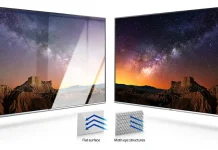Back in 2016, LG (as well as other TV manufacturers) announced that its devices would receive HDR support. First of all, you need to understand that HDR Super/HDR Pro is just a marketing name given to the HDR feature support in LG TVs. Such beautiful names are common among manufacturers, both LG and other manufacturers, Samsung, for example, calls this feature Quantum HDR. As a rule, such names are registered as a trademark.
What is HDR?
HDR, or High-Dynamic-Range, is a technology that requires not only a TV that supports it, but also an image captured with that technology. In simple terms, HDR works like this: in order to fill the brightest and darkest parts of the image with more detail, the image itself is shot several times with different exposure values. All these images are then combined to present as much detail as possible in the brightest and darkest parts of the image. In addition to the video itself, the content also contains HDR information, called metadata This metadata determines the brightness, color, and contrast level of the image. In practice, it works like this, if a movie is shot with dark scenes, the TV will read the metadata and set the desired settings to the values specified in the metadata. It turns out that the movie controls the TV’s settings.
What is LG HDR? HDR Super vs HDR Pro
LG, like many other TV manufacturers, comes up with its own marketing name for the HDR support feature. LG has named HDR support as HDR Pro and HDR Super. There’s no need to compare HDR to HDR Super or HDR Pro, as the former is the name of the technology and the other two are simply commercial names used by a particular company.
What is HDR Super?
I won’t write much, so all you need to understand is that HDR SUPER is the commercial name given to TVs with OLED or Nano Cell screens, they fully support HDR video and can show 10-bit color depth. There’s nothing else behind those words, just HDR support.
What is HDR Pro?
HDR Pro is another commercial name given to LG TVs with HDR support, but such TVs have QNED screens. A new line of TVs has been developed and a new name for the technology has been coined.
HDR Super vs HDR Pro: What’s the difference?
As I mentioned, LG introduced HDR support back in 2016, but the company uses two different names for the technology. HDR Super is used for OLED and NanoCell screens, while HDR Pro is used for QNED screens.
According to HDR standards, HDR video can only fully support TVs with a color depth of 10 bits (or more).
In fact, since HDR is standardized. In order for a TV to use HDR, an image with metadata is required. But you have to understand that HDR SUPER and HDR Pro are one name for HDR technology. LG has come up with its own name, which it assigns to televisions depending on the type of screen.





